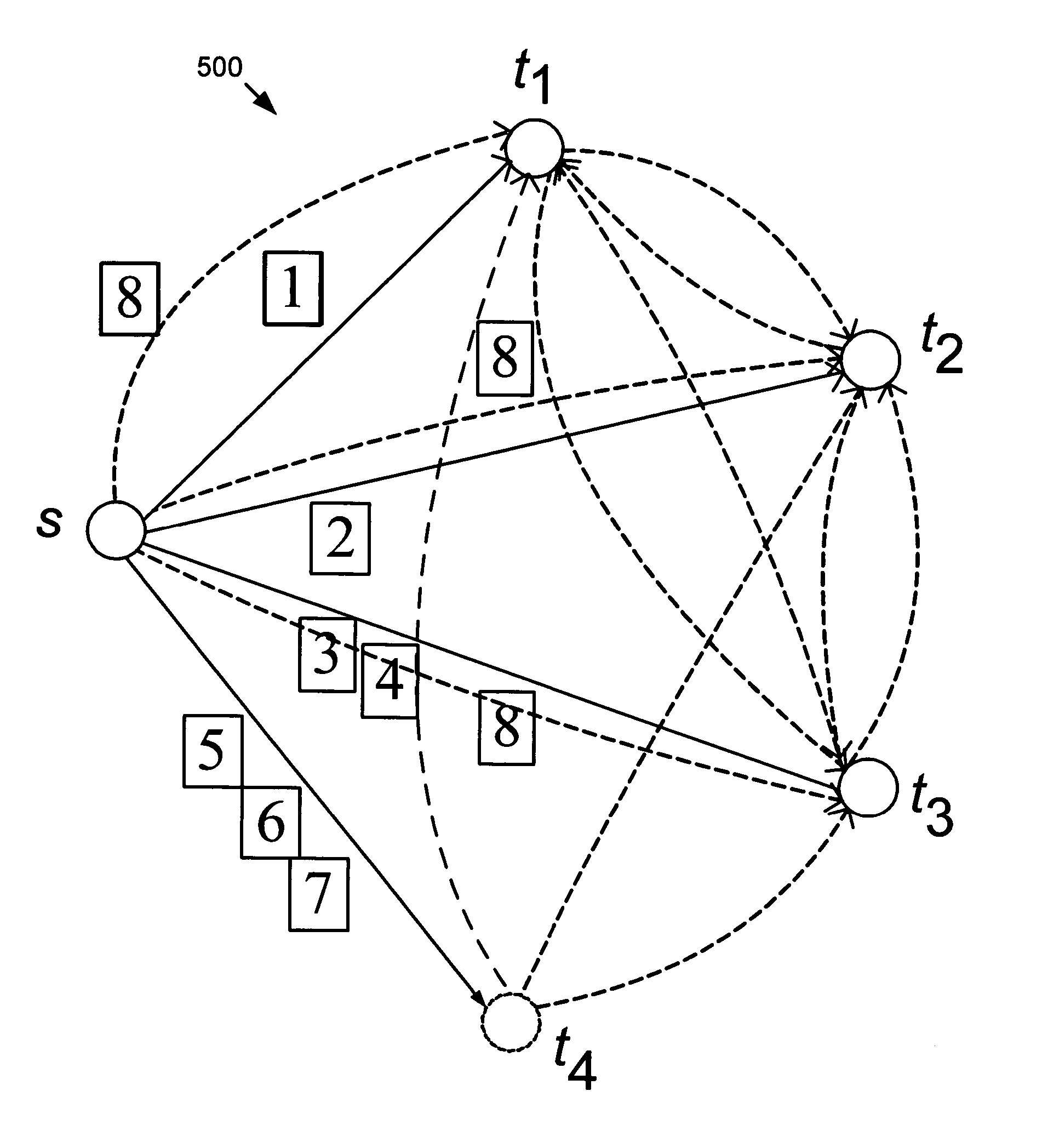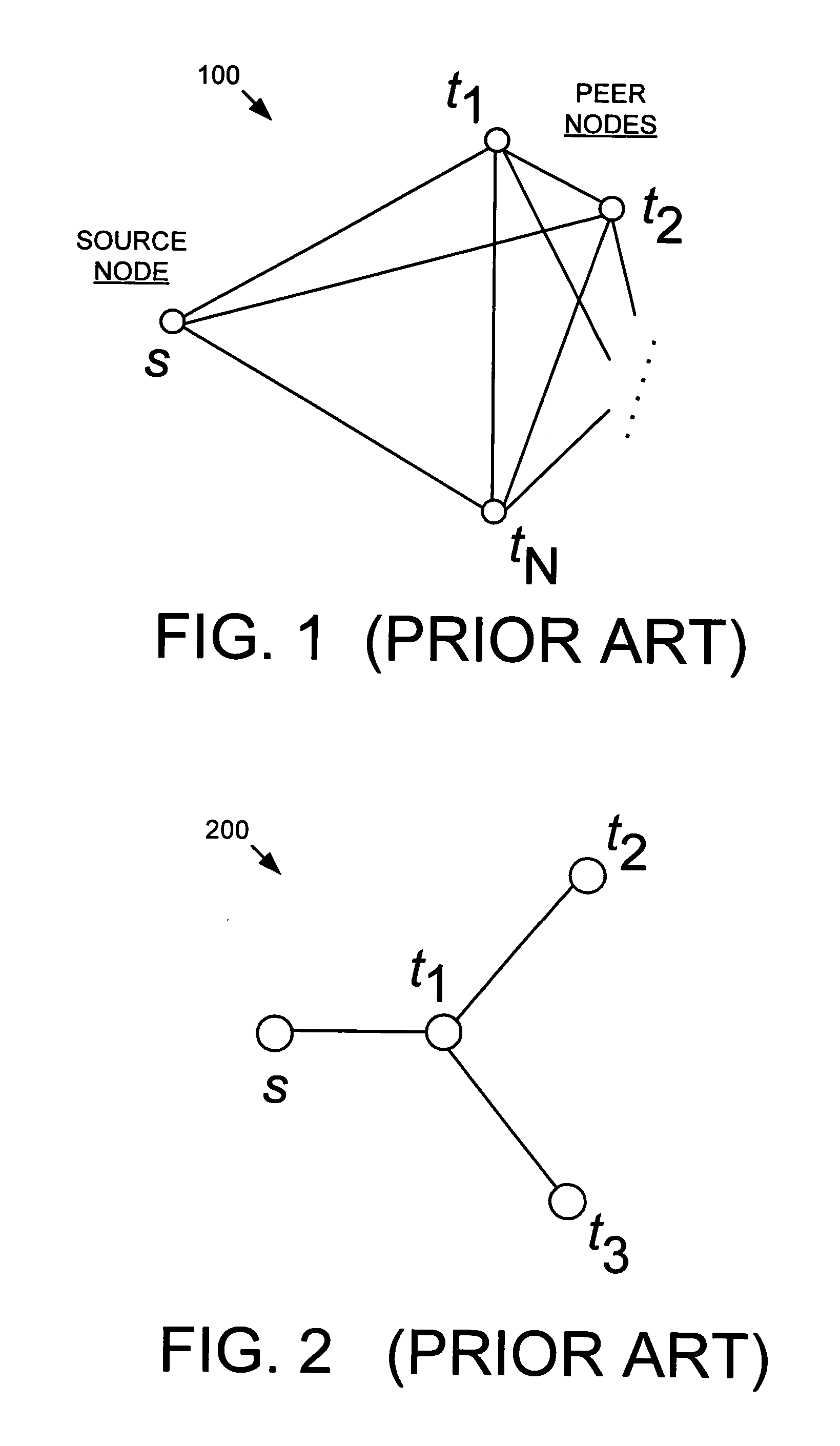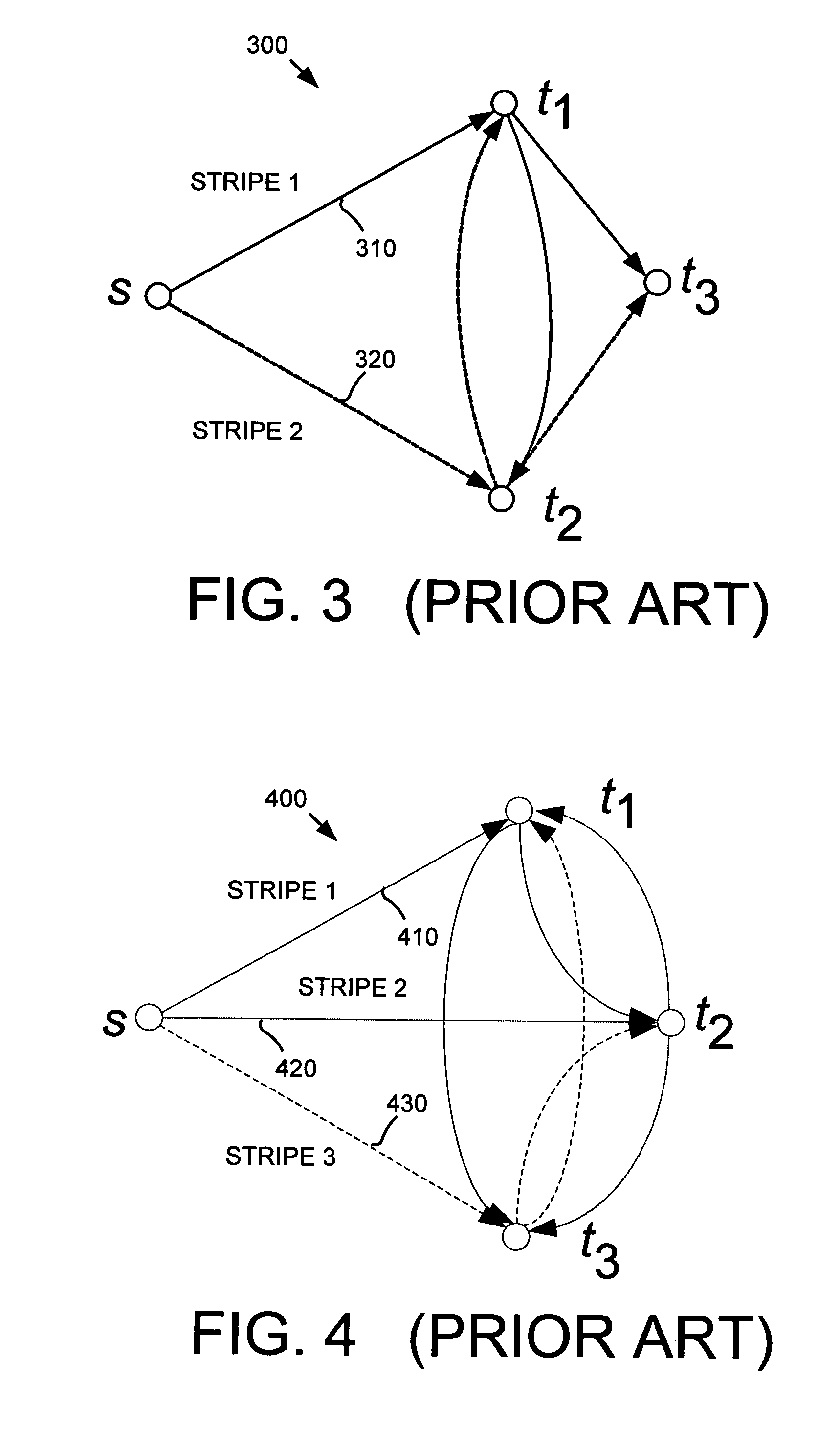Efficient one-to-many content distribution in a peer-to-peer computer network
a peer-to-peer computer network and content distribution technology, applied in the field of computer networking, can solve the problems of not fully utilizing the bandwidth capabilities of all peer nodes on the network, none of these current techniques adequately account for and adapt to the differences in bandwidth between the peer nodes, and cannot achieve the most efficient content distribution in the network. , to achieve the effect of efficient content distribution, maximum possible throughput, and maximum throughpu
- Summary
- Abstract
- Description
- Claims
- Application Information
AI Technical Summary
Benefits of technology
Problems solved by technology
Method used
Image
Examples
working example
[0076] In order to more fully understand the content distribution method and system disclosed herein, the operational details of an exemplary working example are presented. It should be noted that this working example is only one way in which the content distribution method and system may be implemented.
[0077] In this implementation, the content distribution method and system included a sender module run by the source node and a receiver module run by each of the peer nodes. In order to verify the performance of the content distribution method and system, a content delivery P2P network was constructed having one source node and four content-receiving peer nodes. A media file having a size around 1 MB then was distributed from the source node to all the peer nodes. The actual throughput was measured by dividing the distribution file size by the time it took the content distribution method and system to distribute the file. This then was compared with the theoretical broadcast capaci...
PUM
 Login to View More
Login to View More Abstract
Description
Claims
Application Information
 Login to View More
Login to View More - R&D
- Intellectual Property
- Life Sciences
- Materials
- Tech Scout
- Unparalleled Data Quality
- Higher Quality Content
- 60% Fewer Hallucinations
Browse by: Latest US Patents, China's latest patents, Technical Efficacy Thesaurus, Application Domain, Technology Topic, Popular Technical Reports.
© 2025 PatSnap. All rights reserved.Legal|Privacy policy|Modern Slavery Act Transparency Statement|Sitemap|About US| Contact US: help@patsnap.com



